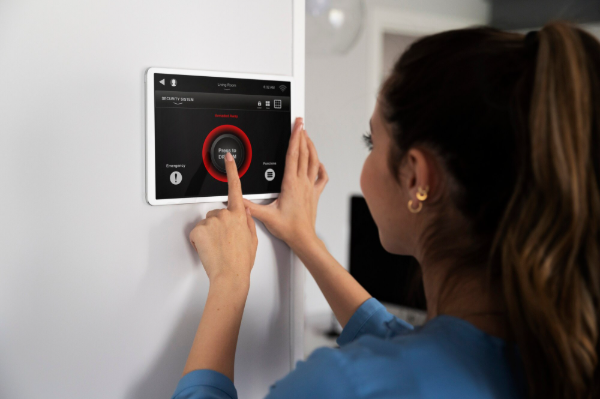In today's world where crime rates and security threats are on the rise, installing an alarm system has become essential for homes, office buildings, and various establishments. An effective alarm installation not only helps protect your property from theft but also provides alerts in case of other emergencies such as fires or gas leaks.
This article will introduce different types of alarm systems, installation procedures, benefits, and considerations when choosing the system that best suits your needs.

Types of Alarm Systems
1. Burglar Alarm Systems
Burglar alarm systems are the most popular type and include the following main components:
- Motion Sensors: Detect unusual movement within designated areas
- Door and Window Sensors: Alert when doors or windows are opened without authorization
- CCTV Cameras: Record events and send real-time data
- Control Panel: Central hub for managing the entire system
- Alarm Sirens: Emit loud sounds to warn and deter intruders
2. Fire Alarm Systems
These systems are crucial for preventing damage from fires and include:
- Smoke Detectors: Detect smoke from combustion
- Heat Detectors: Identify abnormally high temperatures
- Notification Devices: Sirens, flashing lights, or voice announcement systems
- Automatic Fire Suppression: Connected to automatic fire extinguishing systems in some cases
3. Integrated Security Systems
These systems combine features of both burglar and fire alarms, with additional capabilities such as:
- Access Control: Manage access to different areas using cards, codes, or biometric systems
- Gas Leak Detection: Alert when dangerous gas leaks are detected
- Smart Home Integration: Control through smartphones and connect with other smart devices
Alarm System Installation Steps
1. Planning and Needs Assessment
Before beginning installation, assess your needs and the areas requiring protection:
- Survey vulnerable points that might be targets for intrusion, such as doors, windows, or other entryways
- Determine the type of system suitable for your building
- Plan the placement of equipment to cover maximum area
- Establish a budget for installation and maintenance
2. Selecting Appropriate Equipment
Choose quality equipment that meets your requirements:
- Check the quality and safety standards of the equipment
- Consider systems that can be expanded in the future
- Select easy-to-use systems with reliable warranties
- Verify compatibility with other existing systems
3. Equipment Installation
The steps for installing an alarm system include:
- Control Panel Installation: Install in an accessible location but safe from tampering
- Wiring: Run wires neatly and safely, or choose wireless systems for certain points
- Sensor Installation: Place sensors at critical points such as doors, windows, and other entrances
- CCTV Camera Installation: Choose positions that provide clear and comprehensive coverage
- Siren Installation: Install in locations where the sound can be heard throughout the building
4. System Testing
After installation, thoroughly test the system:
- Test each sensor's functionality
- Check the accuracy of CCTV cameras
- Test the notification system to ensure it works as configured
- Verify connections to security centers (if applicable)
5. Connecting to Security Centers or Applications
Most modern alarm systems can connect to security centers or smartphone applications:
- Configure connections to 24-hour security monitoring centers
- Install smartphone applications for remote control and monitoring
- Set up notifications via SMS or email
Benefits of Alarm System Installation
1. Enhanced Security and Peace of Mind
- Prevent intrusion and theft
- Alert in case of emergencies such as fires or gas leaks
- Provide reassurance for residents or employees
2. Reduced Insurance Costs
- Insurance companies often offer lower premiums for buildings with good security systems
- Save costs in the long run
3. Remote Monitoring
- Check the status of your home or building at any time via smartphone
- View real-time footage from CCTV cameras even from remote locations
4. Evidence Recording
- CCTV cameras record events that can be used as evidence if incidents occur
- Assist in investigations if undesirable events take place
5. Increased Property Value
- Properties with good security systems typically have higher values
- Serve as a key selling point for future sales or rentals
Considerations When Choosing an Installation Provider
1. Experience and Expertise
Choose companies with experience and expertise in alarm system installation
Check past work and customer satisfaction
2. After-Sales Service
Check warranties and after-sales services
Consider long-term maintenance contracts
3. Standards Certification
Choose companies and products certified to safety standards
Verify licenses and certifications from relevant authorities
4. Value for Money
Compare prices and services from multiple companies
Consider long-term value, not just the lowest price
Alarm System Maintenance
1. Regular Inspections
Test the system regularly according to manufacturer recommendations
Check backup batteries periodically
2. Cleaning
Clean sensors and CCTV cameras to ensure efficient operation
Remove dust and obstructions that might interfere with equipment functionality
3. Software Updates
Always update system software to the latest version
Stay informed about security updates
4. Password Changes
Change passwords regularly
Use complex and unique passwords
Conclusion
Installing an alarm system is a worthwhile investment for the security of homes and businesses. Choosing the right system, proper installation, and regular maintenance will help ensure the system operates efficiently and extends its service life.
Whether you choose to install a basic alarm system or a complex one, the important thing is to select a reliable and experienced service provider to ensure your system will work effectively when needed.
An efficient alarm system not only helps protect your property but also protects what matters most – the safety of your loved ones.
